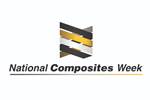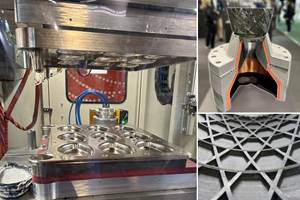
In recognition of National Composites Week, CompositesWorld is looking back on the top 20 stories of the past decade. These stories are still relevant today and show the impact of composites across time. Are composites essential? The answer in these stories proves to be yes.
High-temperature performance and superior strength properties may make this late-comer a better choice in some applications.
A wealth of low-cost core solutions are available for high-performance sandwich structures.
As the wind energy market continues to grow, competition heats up between glass and carbon fiber composites for turbine blades.
Oven-cured, vacuum-bagged prepregs show promise in production primary structures.
For composite applications, these hollow microstructures displace a lot of volume at low weight and add an abundance of processing and product enhancements.
Applications aren't as demanding as airframe composites, but requirements are still exacting — passenger safety is key.
Composite structures are more vulnerable to damage than metal, but today's LSP products offer proven protection.
Composites Technology Development's first commercial tank in the Type V category presages growth of filament winding in storage of compressed gases.
Fiber-reinforced plastic (FRP) replacing coated steel in more reinforced-concrete applications.
Approaching rollout and first flight, the 787 relies on innovations in composite materials and processes to hit its targets
Commercial production of recycled carbon fiber currently outpaces applications for it, but materials characterization and new technology demonstrations promise to close the gap.
Fast-reacting resins and speedier processes are making economical volume manufacturing possible.
Lightweight, hard and stable at high temperatures, CMCs are emerging from two decades of study and development into commercial applications.
Two decades of technical and market development has made this once marginal application a global giant and one of the world’s largest markets for composites.
Naval architects reveal design, tooling and material selection guidelines for a new sportfishing powerboat.
Yes, advanced forms are in development, but has the technology progressed enough to make the business case?
As composites take a larger part (and form larger parts) in the aerospace structures sector, it’s not just a make-it-or-break-it proposition.
Focused on optimizing traditional hand layup, nacelle and thrust reverser manufacturers cast an eye on future use of automation and closed molding.
Automated tape laying and automated fiber placement technologies take a key enabling role in production of today’s — and tomorrow’s — composite-airframed commercial jets.
As the general aviation (GA) segment emerges from the recessionary storm clouds, GA manufacturers and the composites supply chain that supports them should see sunny days … with some clouds and a chance of rain.
It should be noted that two honorable outlier mentions are “The making of glass fiber” and “The making of carbon fiber.”
Related Content
Bombardier begins manufacture of Global 8000 business jet
Ultra-long range business jet featuring CMC-intensive engine and a range of 8,000 nautical miles is set to enter service in second half of 2025 as it remains on track for flight testing.
Read MoreMATECH C/ZrOC composite is deployed in hypersonic aeroshells
Ultra high-temperature insulating CMC targets hypersonics, space heat shields and other demanding applications, tested up to 2760°C under extreme stagnation pressures.
Read MoreA new era for ceramic matrix composites
CMC is expanding, with new fiber production in Europe, faster processes and higher temperature materials enabling applications for industry, hypersonics and New Space.
Read MoreJEC World 2024 highlights: Thermoplastic composites, CMC and novel processes
CW senior technical editor Ginger Gardiner discusses some of the developments and demonstrators shown at the industry’s largest composites exhibition and conference.
Read MoreRead Next
National Composites Week: The Essentials of Composites
Kicking off the second National Composites Week, we’re starting with some industry basics.
Read More“Structured air” TPS safeguards composite structures
Powered by an 85% air/15% pure polyimide aerogel, Blueshift’s novel material system protects structures during transient thermal events from -200°C to beyond 2400°C for rockets, battery boxes and more.
Read MorePlant tour: Daher Shap’in TechCenter and composites production plant, Saint-Aignan-de-Grandlieu, France
Co-located R&D and production advance OOA thermosets, thermoplastics, welding, recycling and digital technologies for faster processing and certification of lighter, more sustainable composites.
Read More





















